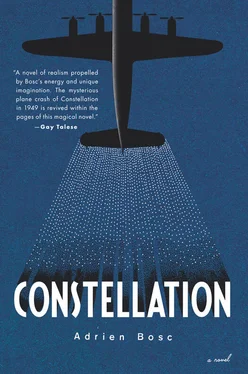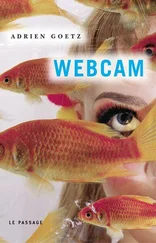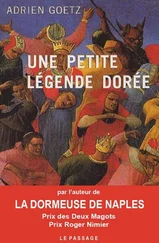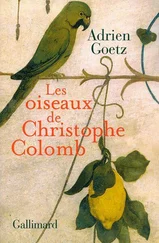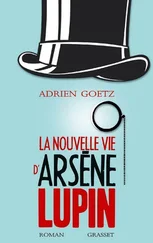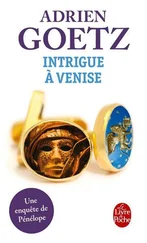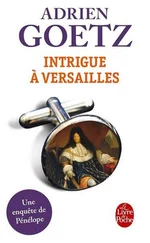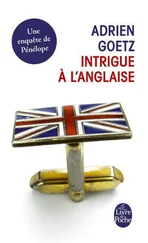To his right, Ernest Lowenstein, who owns tanneries in France and Morocco, is still marveling at being on the same flight as Marcel Cerdan. He manages to approach the champion and get his autograph in a notebook. The stewardess, wearing a pleated skirt, a navy-blue jacket, and a beret with the airline’s sea horse insignia, patrols the central aisle — on one side is a row of reclining seats and on the other curtained sleeping alcoves — passing out meal trays to the passengers: beef in aspic, lamb stew, and macaroons, accompanied by champagne. Air France has been offering hot meals on its planes since September 30, a first for many of the passengers. The idea came from Max Hymans, the company’s president, who created the catering service at Orly a few months earlier, enlisting several great Parisian chefs for the venture.

Thirteen thousand nine hundred feet above the Atlantic, the Constellation transmits its position to Orly at 2100 hours and proceeds on a diagonal toward the Azores. The plane, traveling at 250 miles per hour, will reach the Santa Maria airport at 2:30 in the morning GMT. Its cruising speed attained, the aircraft seems to be soaring. In the pilot’s cabin, Jean de La Noüe lets go of the joystick and puts his two copilots in charge. Communicating directly with Air France’s operation center, Roger Pierre reads out the weather report.
“Captain, Paris has just confirmed the flight plan radioed to Santa Maria. A low-pressure system is expected over the islands at arrival time, with limited visibility on the ground.”

It is almost 2300 hours when Jean de La Noüe resumes control of the aircraft while passing through a zone of turbulence. He decides to climb and settle the plane above the cloud cover. In the cabin, the passengers are falling asleep, rocked by the rhythmic drone of the propellers. A few minutes before the descent, the captain will wake them up to fasten their seat belts and prepare for landing. A first three-hour nap, before the long northward leg to Newfoundland.
Jean is not an affable man, his style of command is marked by silence — a few well-chosen words, nothing flowery — only what it takes to keep the flight on track. A taciturn authority. He rarely talks about the war and his exploits, unlike his two copilots, whose first exposure to flight was in the naval air force. Veteran pilots bored with the monotonous southern route to the Americas, they are arguing the merits of the latest fighter planes and describing the performance characteristics of the Soviet MiG-9 and Yak-15, compared with the U.S. Air Force’s F-84 Thunderjet. And touting the efforts of French aviation, which, after a late start, produced the SO.6000 Triton, a single-engine two-seater with a maximum speed of 592 miles per hour — about 200 miles below the sound barrier broken by Chuck Yeager in the Bell X-1, the experimental plane shaped like a sparrow hawk. The French airmail service had pushed the envelope by “always giving it a try” and “always taking off,” but now there were new limits, sonic and spatial.

At one in the morning, from 185 miles away, the plane makes contact with the Santa Maria control tower. In the first exchanges, the Constellation is instructed to regulate its transmitter. The signal, according to airport authorities, is erratic, the tuning off. Radio beacon guidance along the Azores line confirms the aircraft’s ideal position. The regional center announces optimal weather conditions and good visibility at ground level.
Their town, unbelievably, stood straight up.
— Louis-Ferdinand Céline, Journey to the End of the Night
Bernard Boutet de Monvel disliked air travel. This was not a phobia. He had been a pilot. A hero, in fact. Called up in 1914, he distinguished himself in exploits over the Bay of the Somme, then on a brilliant raid from Salonika to Bucharest. Despite this, he much preferred the leisurely pace of transatlantic ocean liners, flying only when necessary. A man from an earlier century, the representative of a world in decline, one soon to be surpassed by the reign of hurried men, Boutet de Monvel would concur with Paul Valéry in his Outlook for Intelligence: “Duration has become unendurable. We have lost the art of fecundating boredom.” As a painter of uninflected lines, of plane geometry, he enjoyed looking at the rectilinear perfection of luxury liners. The soft underbelly of the twentieth century, which he was traversing despite himself, seemed far more the end of an era than the interwar years ever had. He felt the race had passed him by, and he happily relaxed his pace. In answer to the new man, he offered a caricature of another time. His dandyism, which he pushed to the limit, his impeccable dress, his pronounced good manners, all served to counter the general haste. A slight step to the side in his patent leather ankle boots, a source of secret delight, jumping the rails in his three-piece suit away from the world’s ongoing march. The anonymous crowds — lost among tall buildings, vast train stations, giant streets — had all obsessed him once. The setting struck him as the perfect transcription of an ideal, a contest between flat shapes, massiveness framed in a vertical design. The avant-garde’s dismissal of him was more reassuring than painful, he saw it as a form of recognition. His being out of step, raised to an ethic, had set him swimming irremediably against the tide. Thus it was in 1926, with the Paris art world at the height of its influence, that he immigrated to the United States, only to return to Paris briefly in the middle of World War II, when New York became the chosen place of exile for European artists. A hopscotching course that sometimes worked to his disadvantage. Having vowed to shake off the label of society painter, he unintentionally became, on the far side of the Atlantic, the portraitist to the millionaires, the leading painter of café society. He had painted landscapes of Fez after the Great War, made sketches for Harper’s Bazaar aboard ocean liners, drawn steel mills in Chicago and views of Grand Central Terminal, but what brought him fame and adulation were his full-length portraits. Already in 1908, it was his self-portrait, an act of artistic masochism, that had earned him the recognition of his peers at the French Society of Fine Arts. At the society’s exhibition, amused, he’d responded to the presentation of his work with a falsely modest quip: “No, nothing to speak of, a portrait of myself.” When you try to undermine yourself, sometimes you succeed. A paradoxical position suggesting that failure may have its good sides. Thus when the stock market crashed in 1929, he celebrated. As millionaires jumped from skyscrapers, his commissions became scarcer, and he was able to concentrate on painting the empty expanses of the New World. A fecund depression, no longer painting the tired flesh of proud souls but concrete vistas instead. The factory and not its boss, the high-rise in place of its owner.
With his aristocratic face marked by deep blue eyes and clear features, ennobled by a broad forehead, Boutet de Monvel — his hair slicked, his dress invariably fastidious — had a cold, implacable, commanding beauty. He hardly ever disturbed this royal engraving. Monvel was a quiet eccentric, nothing advertised the madcap spark within him. A night owl of the early century, he had been a regular at Maxim’s. Night after night, he and his gang rivaled one another at cheating boredom. Still today he remembers with hilarity his sidekick, Ravaud, dressing as an omnibus driver and taking his passengers out to the village of Pontoise. Monvel was stone-faced, impeccable, drawing enjoyment from every situation, even the most alarming. In the middle of World War II, he gathered all the members of his family to pose in front of his country house in gas masks, and the surrealistic snapshot was prominently displayed in his New York apartment.
Читать дальше
